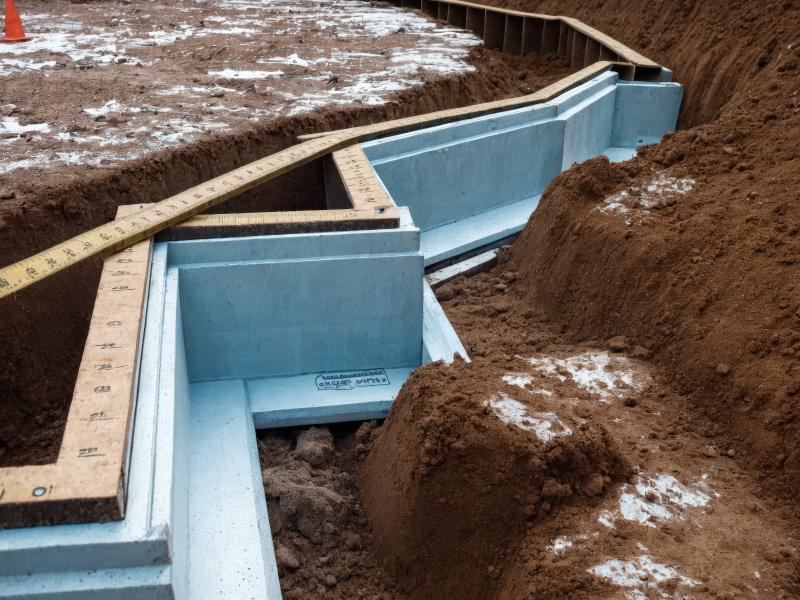Frost Depth Foundation Protection Installation
When constructing buildings in cold climates, protecting foundations from frost heave is crucial. Frost heave occurs when water in the soil freezes and expands, causing upward movement that can damage the foundation. To mitigate this, engineers and architects must consider frost depth and implement appropriate protection measures.
Understanding Frost Depth
Frost depth refers to the depth at which the ground freezes during the coldest part of the year. This depth varies depending on the local climate and soil conditions. In colder regions, the frost line can be several feet below the surface.
Traditional Methods
The conventional method for protecting foundations from frost heave is to excavate below the frost line and construct the foundation at that depth. This ensures that the foundation remains below the freezing zone, preventing frost heave.
Frost-Protected Shallow Foundations (FPSF)
An alternative to deep excavation is the use of Frost-Protected Shallow Foundations (FPSF). This method involves insulating the foundation to keep the ground around it above freezing temperatures. The International Residential Code (IRC) provides guidelines for FPSF, including the required insulation levels and footing depths based on the local climate.
Installation Steps
- Site Preparation: Clear the site of any debris and level the ground.
- Insulation Placement: Install rigid insulation around the perimeter of the foundation. This insulation should extend horizontally away from the foundation to create a “wing” that prevents frost from penetrating.
- Foundation Construction: Pour the concrete slab and footing as a single monolithic pour. Ensure that the insulation is properly secured and protected from damage.
- Inspection and Testing: Conduct soil tests to ensure that the foundation is properly insulated and meets local building codes.
By following these steps, engineers and architects can effectively protect foundations from frost heave, ensuring the longevity and stability of the structure.
Factors Affecting Frost Depth
Frost depth varies depending on several factors:
- Climate: Colder regions tend to have a deeper frost line because the ground is exposed to freezing temperatures for a longer period.
- Soil Type: Sandy soils freeze more quickly and to a greater depth than clay soils because they have lower moisture content and better drainage.
- Snow Cover: A thick layer of snow acts as an insulator, reducing the depth of frost penetration. In areas with heavy snowfall, the frost depth may be shallower.
- Vegetation: Trees and plants can influence frost depth by insulating the ground and reducing the amount of freezing.
Measuring Frost Depth
Frost depth can be measured using frost tubes, which are plastic tubes filled with a colored liquid that freezes at the same temperature as water. As the ground freezes, the liquid in the tube also freezes, and the depth of the frozen liquid indicates the frost depth.
Frost Depth Data
Local frost depth data is often available from building codes or local government agencies. These data are essential for designing foundations that can withstand the effects of freezing and thawing cycles.
Applications of Frost Depth Knowledge
Understanding frost depth is crucial for various construction and engineering applications:
- Foundation Design: Ensuring that foundations are built below the frost line prevents frost heave and maintains structural integrity.
- Road Construction: Frost depth knowledge helps in designing roads and pavements that resist frost action, reducing maintenance costs and improving durability.
- Utility Installations: Water, sewer, and other utility lines must be buried below the frost line to prevent freezing and potential damage.
Frost-Protected Shallow Foundations (FPSF)
As mentioned earlier, FPSFs are an innovative solution to traditional deep foundations. They use insulation to keep the soil around the foundation above freezing temperatures, allowing for shallower foundation depths and reducing excavation costs.
By understanding and considering frost depth, engineers and architects can design structures that are resilient to freezing conditions, ensuring longevity and stability.
Have any questions about Foundations? Contact Us and we will get them answered for you!

